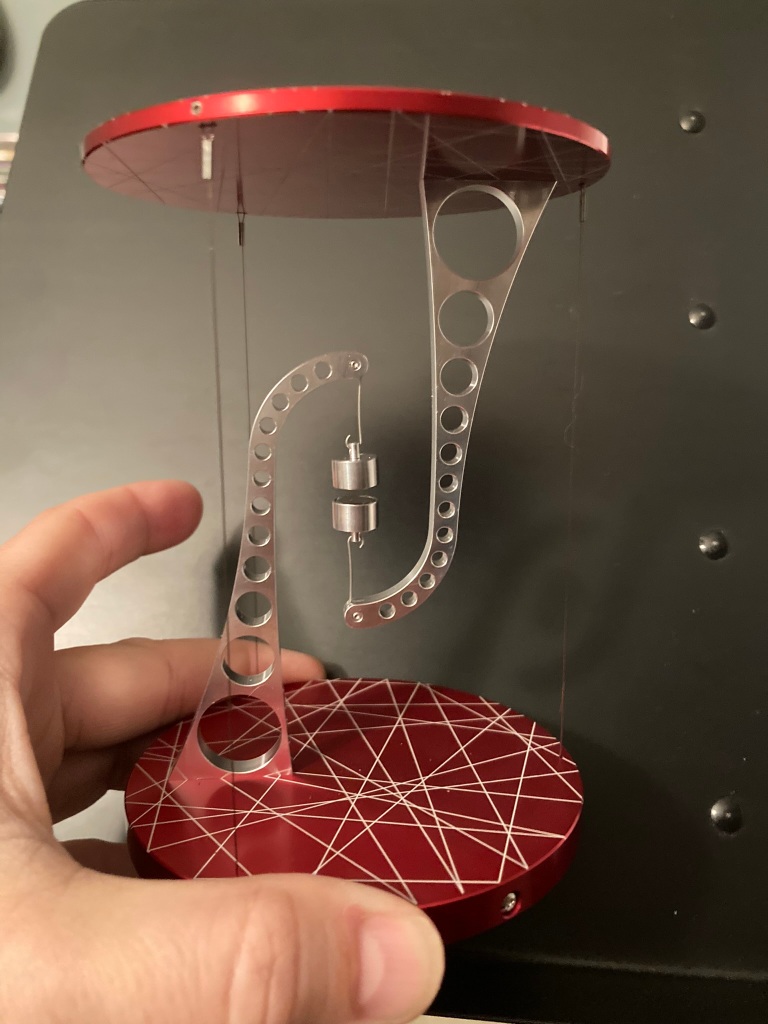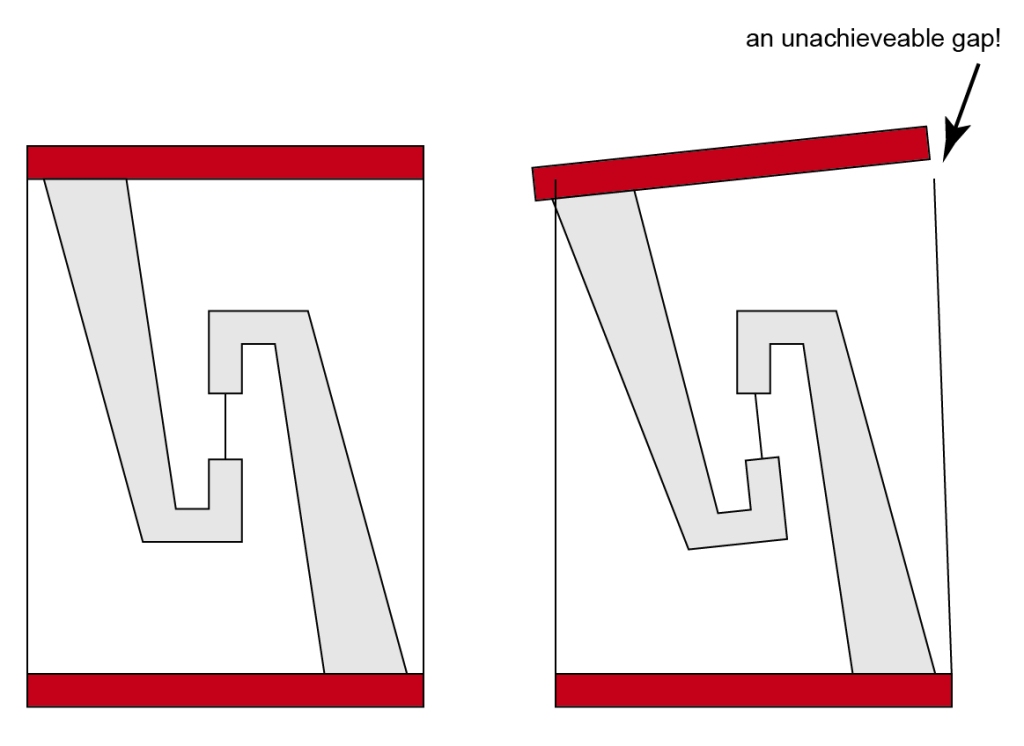The best demonstrations of physics are those that show you something completely unexpected and counter to the way that physics is supposed to work. One of my favorites is this curious contraption, which I got through a Kickstarter a few years ago:
This is what is known as a tensegrity table, which demonstrates the phenomenon of tensegrity. What is “tensegrity?” We’ll get to that in a moment, but let’s just marvel at how this structure stands upright, supported only by wires, with the added twist of the wire in the middle of the structure being held together by magnetic force, leaving a gap in between! Thus that connection has no material connection at all! (This is the feature that drew me to this Kickstarter in particular.) How can such a structure stay standing, if only flexible wires are supporting it?
“Tensegrity” is a portmanteau of “tensional integrity” coined by Buckminster Fuller back in the 1960s. It refers to structures that have isolated components held together by tension. In the case of my little device, the wires on the outside and inside (with magnets) provide the tension holding things upright. Though the term was coined in the 1960s, there are examples of tensegrity from artists earlier in the 20th century, and very old traditional structures also show elements of the concept.
One thing I don’t typically see in discussions of tensegrity is an explanation of how it works in any particular case, so I thought I would take a stab at an intuitive explanation of my particular tensegrity table.
First, we note that, ignoring any tipping or tilting of the upper part of the structure, it is held upright by the two interior bars and central wire. You might at first glance think that the structure should just simply tip over, but let’s draw a picture of what must happen in that case:
From my little sketch, you can see that if the top were to tip sideways, one side of it would raise up. But, if the wire is taut and does not stretch, it can’t raise up. It would have to stretch to allow it to fall to the side. There are three wires total on the outside circle, and that is evidently enough to keep it from tilting and thus forcing it to stay in place.
One can see that the tension is important in “tensegrity.” If there is significant slack in any of the side wires, the structure will fall. If the connection is broken in the middle of the structure, it will collapse entirely. With the magnet design, this is actually really easy to do, because the magnet isn’t super strong so any significant weight on the top of the table will cause it to topple.
If we have a solid wire and not a magnet in the center, the tensegrity table is actually quite strong, and can support any weight that isn’t enough to break the metal wire.
Curiously, one of the first tensegrity tables I saw was actually made out of LEGO, on the JK Brickworks site! There are instructions there and links to buy the appropriate pieces if you want to try it yourself.
One thing I like about tensegrity is that it highlights something that I stress in my own optics research: it is one thing to know fundamental laws of physics, it is quite another thing to understand their implications! In this case, I don’t think anyone who has studied Newton’s laws of force in their first year undergrad course would be able to immediately see that tensegrity is possible; in fact, they might draw the opposite conclusion.
My own research is in classical optics, i.e. the study of the wave properties of light as governed by Maxwell’s equations. Maxwell’s equations were first introduced in the 1860s, but research into all the things that are possible or impossible for light continues to this day, often with unexpected surprises! For example, the idea of a negative refractive index was thought to be nonsense until 2000, when John Pendry argued that not only is a negative index plausible, but it also can result in new and useful optical phenomena!
Tensegrity is a good reminder that we should keep looking for other unexpected consequences, even for very familiar physical laws. We can let Hamlet have the last word:
There are more things in heaven and Earth, Horatio, / Than are dreamt of in your philosophy




